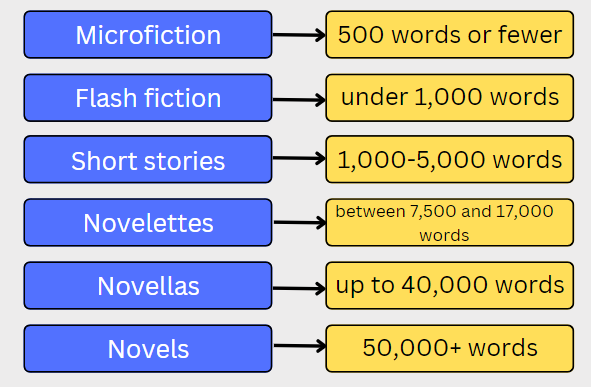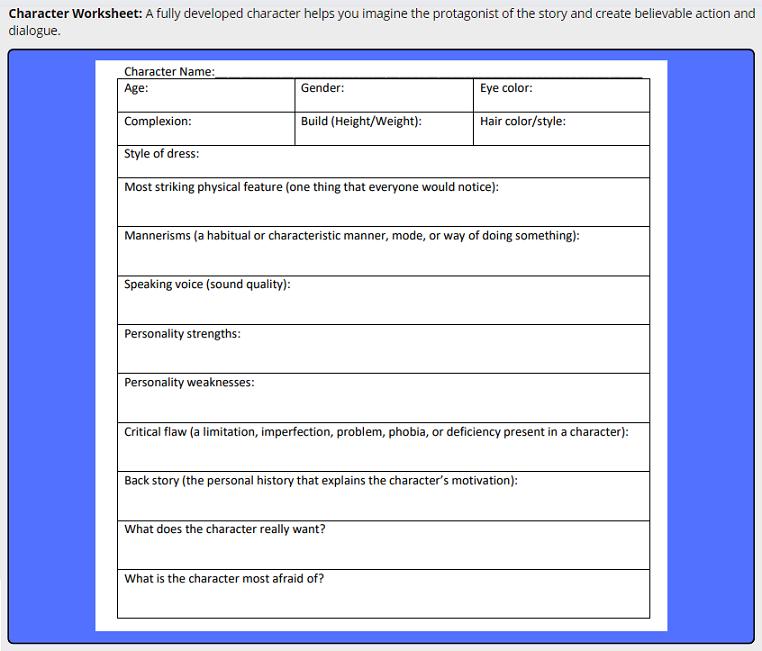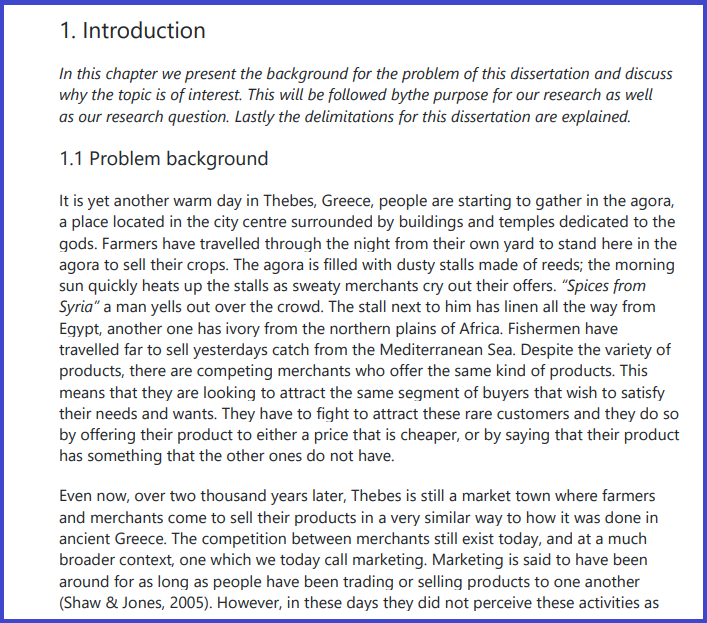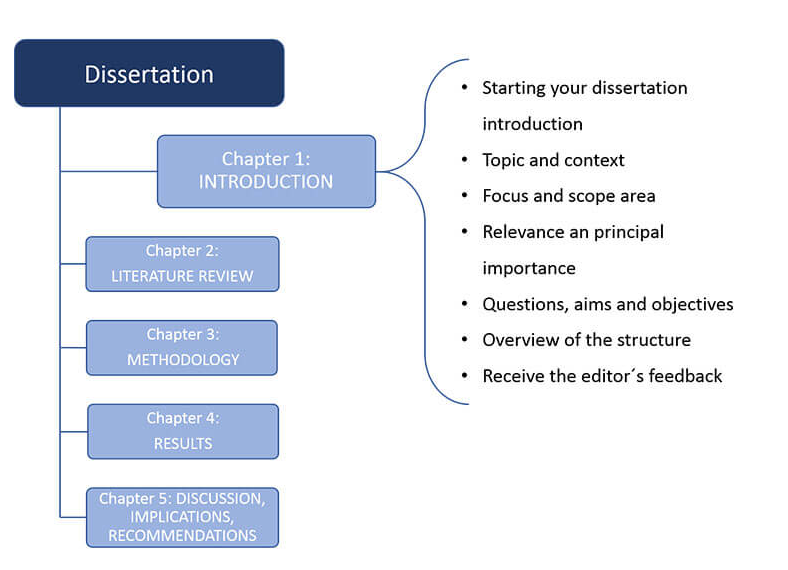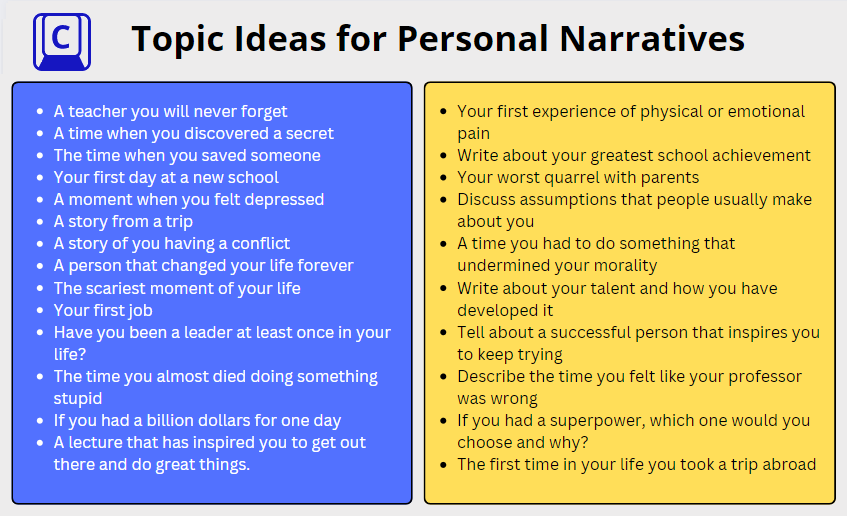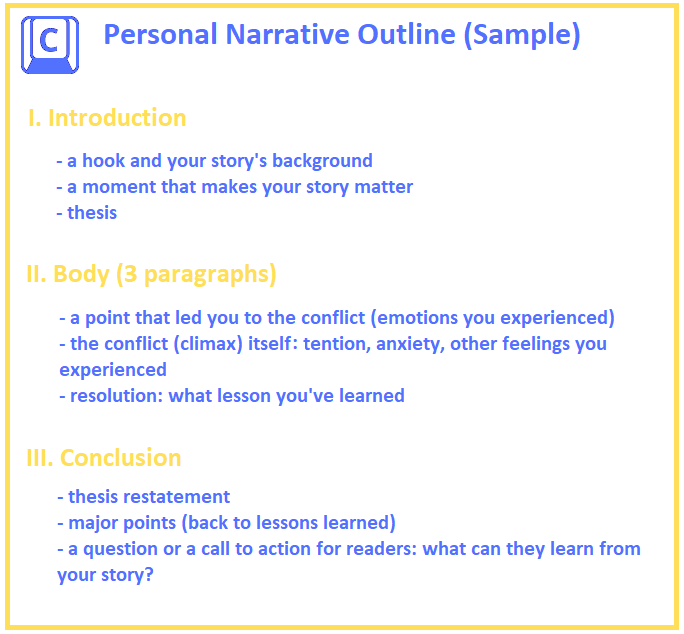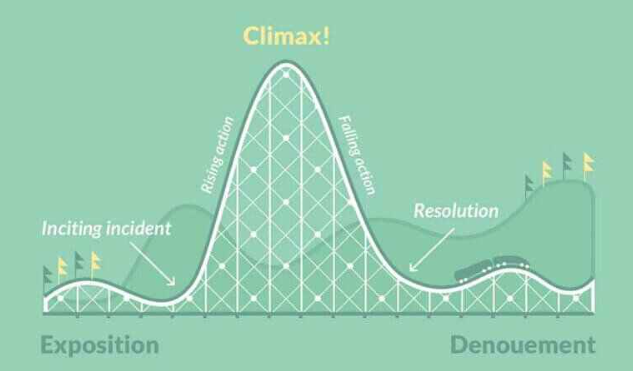Persuasive Writing: How to Craft + 10 Strategies to Follow

In college, you deal with many essay types: term papers, book reports, and personal narratives — all are important to write for a high final grade. Persuasive writing is the trickiest one:
It requires a lot of research and writing strategies to structure your work so you convince readers to agree with your point of view. Not only do you share information, but you also persuade the audience, using solid arguments and evidence in your paper.
In this article, you’ll learn how to write a persuasive assignment and what writing strategies can help you make it worth the highest grade.
What is Persuasive Writing?
Persuasive writing refers to any text aiming to convince the reader of a writer’s opinion. It can be an academic essay, a political or social speech, sales copywriting work, a marketing blog post, etc.
Unlike other writing forms meant to share information, persuasive texts include solid evidence and logical arguments. They appeal to emotions and need to be compelling enough to influence readers and make them agree with an author’s point of view.
What is the Purpose of Persuasive Writing in College?
When a professor assigns persuasive writing in college, they want you to craft a paper where you’ll use logic, solid arguments, and evidence to convince readers.
It’s critical to understand the difference between persuasive and argumentative essays here:
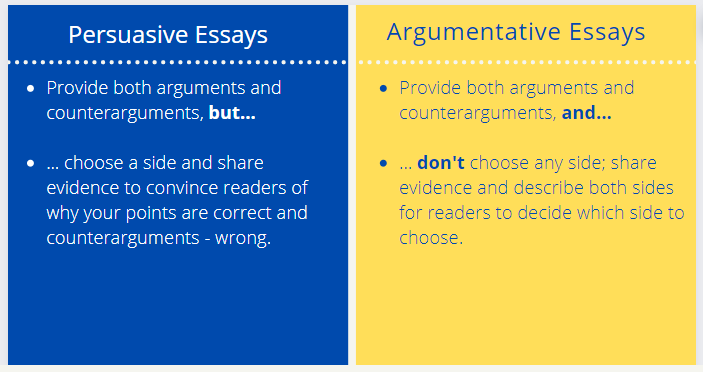
While both require research and arguments, a persuasive essay is about choosing a side and providing evidence only about that chosen aspect. You mention counterarguments here but explain why they don’t work.
Argumentative essays are about representing both sides of a topic. You don’t convince anyone here but describe arguments and counterarguments for readers to decide which side to choose.
What can you use as evidence to persuade the audience of what you say?
- Academic research
- Statistics
- Expert quotes
- Case studies with examples
- Logical reasons
And now, to practice:
How to Write Persuasive Assignments
Choose a Topic
Given that persuasive essays aim at convincing the readers, their topics are to be polemical. In other words, you take an issue with at least two points of view in society. No one needs a persuasive article on “People need air to breathe:” It’s common knowledge, and there’s nothing to prove here. But “People need cannabis for better health” might work: It’s an issue someone would agree while others would disagree with.
Some professors assign a particular topic for persuasive essays, but often they ask you to choose it. (They want to check your critical thinking skills and the ability to prove your point on polemical issues.)
If you want your essay to succeed, consider topics in spheres like animal rights, politics, gender issues, or climate change. However, ensure you write about what worries you and have enough arguments and evidence to persuade readers of your position.
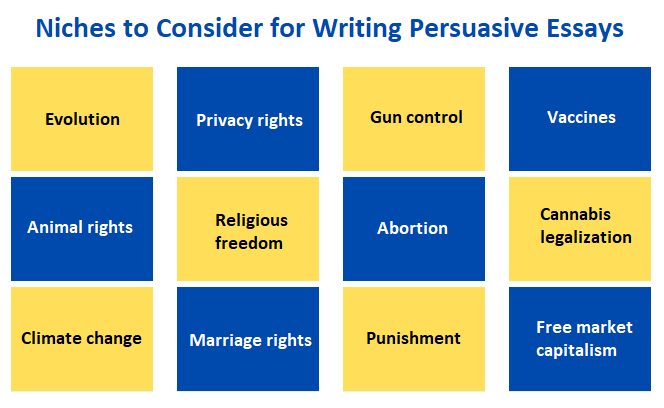
Here go some topic ideas for your persuasive writing:
- Nuclear weapons are effective to prevent foreign attacks.
- Every American should learn a foreign language.
- Feminism is no longer a struggle for women’s rights.
- The power of kindness is in its weakness.
- It is necessary to cancel the mandatory exams in schools.
Two rules here:
(1) Consider topics that inspire you personally, and (2) take topics that are up-to-date and with enough discussion in literature and online: It won’t be problematic to research and find evidence on them.
Do Research
You won’t write an efficient persuasive paper with no research on the topic. Given that you need to convince readers of your opinion, you should understand the topic from multiple angles and decide what side you choose to prove in your writing.
So, once you choose a topic, it’s time to gather the information: Consider academic studies, relevant media news, expert opinions, and historical examples. You’ll need to examine and evaluate them to see what the world already has about this issue and which resources you can use as references in your essay.
Here’s how to evaluate sources: Consider those fitting the five following criteria.
- Current: check the publication date.
- Relevant: check if the info answers your question and is deep enough to cover the issue.
- Accurate: check where the info comes from (educational or governmental resources, reputable organizations, etc.).
- Authoritative: check the authors’ credentials.
- Purposeful: check the purpose of the resource (educate, entertain, persuade). Is their information based on facts? Is their point of view objective?
Choose Your Opinion
Remember the core difference between argumentative and persuasive writing:
Argumentative is about describing both sides of the issue and letting the audience choose which one to support. Persuasion is about convincing the audience of your opinion on the issue.
So, you need to choose a polemical topic and decide whether you agree or disagree with it. Which side are you going to support in your essay?
When choosing, ensure you have enough evidence in your references to prove your point to readers. You’ll need credible arguments to sway the audience to your side.
Write an Outline
Okay, now you have a topic, you’ve chosen the side to prove, and you’ve done research to find solid references that will help support your arguments. It’s time to outline your essay so you don’t miss anything when writing.
Persuasive essays have a standard structure:
- Introduction, with a hook, background, and thesis statement.
- Essay body, with 1-2 paragraphs describing your arguments and evidence + 1 paragraph describing your opponent’s arguments and your counterarguments why you disagree with that opposite point of view.
- Conclusion summing up your points and restating your thesis for the audience to have food for thought after reading your essay.
You are welcome to use the below template for outlining your persuasive essays. Once you fill it in, it will be much easier to write your paper step by step.

Write and Edit Your Persuasive Essay
Now you have everything to sit and start writing your persuasive essay’s draft:
- In the introduction paragraph, describe the issue and state the point you’ll support throughout your paper.
- In body paragraphs, remember to include evidence from credible resources to prove your point and convince readers to agree with you. You can also represent the opposite point on the issue but still provide arguments for why you disagree.
- In the final paragraph (conclusion), wrap up your points and restate your thesis once again for readers to remember it. You can finish with a question for the audience to think about.
Once your essay draft is ready, don’t hurry to submit it to a professor. Wait for a couple of days — and then reread it with a fresh eye to proofread and edit it if necessary.
Re-check your arguments again, and ensure the essay structure is logical and all the paragraphs are clear and coherent. Are your points and evidence solid enough to persuade readers of your opinion? Remember to check your essay for grammar and style errors: Apps like Grammarly or ProWritingAid can assist you.
10 Successful Persuasive Writing Strategies
Here at CopyCrafter, our writers deal with many persuasive essays daily. They’ve shared several practical tips on how to work on your writing assignment so that it turns out successful and A-worthy.
We know you don’t have much time to deal with long reads, so the given persuasive writing strategies go in brief. 😉
1 — Choose a Topic You’re Passionate About
We bet you’ll agree with us on this one:
It’s much easier to research and write about something that is interesting to you. If your professor doesn’t assign any particular topic but invites you to choose yours, think of issues that bother you and that you’d like to share with the audience.
First, it will be easier to research such topics because you already know some facts and evidence about them. And second, they’ll motivate you to examine the question deeper and learn new facts rather than sit and hate your professor for assigning it.
2 — Know Your Audience
To persuade people of your opinion on the topic, you need to know who will read your essay. Do you know their age, interests, or background? What do they know and think about the issue you’re going to represent?
Depending on the audience, you might consider different arguments and evidence for your essay. Also, it will help you understand what words to use and what emotions to appeal to for readers to believe you.
3 — Speak Directly to the Reader
Speaking to the reader is an effective writing strategy, so do your best to address your audience directly as “you:” It makes your writing feel more like a conversation than teaching, encouraging readers to lower their objections and listen to your points.
4 — Research, Research, Research Both Sides
Let’s face it: No one cares about opinions if they don’t follow E-A-T (expertness, authoritativeness, and trustworthiness). Today, we all are online, with personal blogs and social media, sharing thoughts and trying to communicate something to the world. But why should the world care?
In persuasive writing, the depth of research and information matters. As an author, you need to know both sides of the issue to have enough arguments and evidence to prove your point.
So, don’t hurry up to write until you examine and evaluate the facts. For that, do not be lazy to research the topic you’re going to represent in your writing.
5 — Write a Clear Thesis Statement
A thesis statement is the central idea of your writing. It introduces your point of view to the audience and helps them understand what you’ll try to communicate in your paper. That is why it should be clear and transparent.
A clear statement is your weapon to avoid confusion. Otherwise, readers won’t understand the purpose of your essay and will leave disappointed.
6 — Hook the Reader from the Start
Get your audience interested in your writing: Think of a so-called hook to grab their attention from the very beginning. The first sentence of your essay can be an intriguing question about the topic you’ll cover, a quote from an expert sharing some controversial information, unexpected statistics, an interesting fact, etc.
Give them a reason to continue reading your work. What’s so special about it? What’s in there for them? Why should they care? But please do not manipulate readers’ emotions and do not lie: Use straightforward language, be concise, and choose words that sound persuasive. (More on that below.)
7 — Choose Words Carefully
Word choice is critical in persuasive writing because they help emphasize your points, evoke emotions, and convince readers that your opinion is correct and worth trusting. Words are your instrument to build connections and personal relationships with the audience, so do your best to use strong language in your essays.
What does it mean?
Use active verbs, the right tone of voice, and power words (those descriptive and helping the readers understand what you want to say). Avoid redundant adverbs, slang and jargon, and wateriness: be precise.
Don’t repeat linking words and sentences; say no to irrelevant information. If the reader can’t follow your thoughts or you make too many immaterial points, you will lose your reader’s interest and have no chance of persuading them.
8 — Emphasize Your Point
Make the most of exaggeration and hyperbolic statements to express urgency or support your point. It doesn’t mean to lie in an attempt to impress readers: It’s a great persuasive technique when you want to convey an impactful image for readers to “hear” you.
Another writing trick to try is appealing to emotions. Readers are more likely to believe you if they feel you understand them and can relate to their experience. Thus, you’ll target their sensitivities and provide arguments for why their opinions on the discussed topic may change.
9 — Repeat Your Arguments
We speak about strategic repetition here, when you find different ways to make the same point: metaphors, rephrasing, storytelling, and other literary devices. Don’t ignore them while writing:
They’ll prevent you from using monotonous language and the same patterns. Readers won’t think anything like, “Oh my, s/he has mentioned it several times already,” and you will be able to reinforce your point without annoying the audience with repetitiveness.
10 — Ask for Feedback
When you think you have completed your writing, read through it thoroughly and check every part. Invite a few friends or family members to check it and give you their honest opinion, take feedback from unbiased people, and use their comments to make any final and effective changes.
Ready to Write an Essay That Persuades Readers?
Writing persuasive texts that have the potential to change someone’s way of thinking is not an easy task. If you want to succeed here, you need to know your audience, state your point of view clearly, and support it with arguments you can prove with evidence like research, quotes from experts, statistics, and relevant emotional appeals.
More than that, it would help if you could anticipate and respond to objections your opponents might have.
We hope this article has answered all your questions on persuasive writing, its purpose, and how to craft it when assigned. Still in doubt? Feel free to contact our professional writers for assistance.




